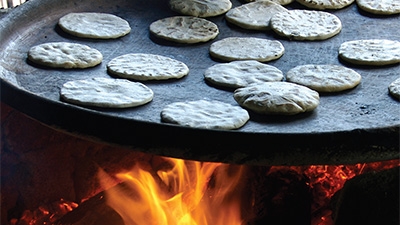In Guatemala, Honduras and Nicaragua, making tortillas on a smoky fire is a way of life. Women spend an average of four hours a day cooking for their families, routinely inhaling toxic smoke from burning wood and charcoal. Every year in Central America, 37,000 premature deaths—most of them women, but also many children—are caused by household air pollution. All told, about 20 million Central Americans, just over half the region’s people, use wood as cooking fuel.
Moving from Central America to Southeast Asia, we find the same phenomenon in the Lao People’s Democratic Republic, where 96 percent of the population still uses solid fuels for cooking, making indoor air pollution the country’s number one health threat. This endures even as 72 percent of households now have electricity, up from just 18 percent in 1995.
In Indonesia, about 40 percent of the population—about 25 million households—uses traditional biomass for cooking. Again, the result is tragic: 165,000 premature deaths each year. It is part of a global problem, especially acute in low-income countries. Worldwide, 2.8 billion people cook with biomass or other solid fuels, 78% of them in rural areas. All are exposed to household air pollution from solid fuels, which killed an estimated 3.5 million people and caused many more cases of respiratory, cardiovascular, and other illnesses in 2010.
“A typical wood fire is about 400 cigarettes an hour worth of smoke,” said Kirk Smith, professor of global environmental health at the University of California at Berkeley.
The Sustainable Energy for All initiative, supported by the World Bank Group, aims to bring safe, modern cooking solutions to all by 2030, a goal estimated to require annual investments of $4.4 billion, up from about $100 million at present.


